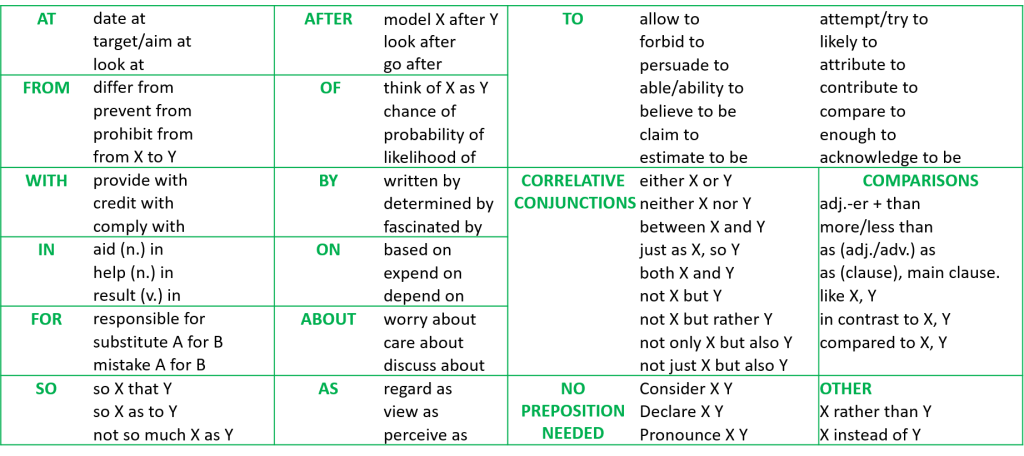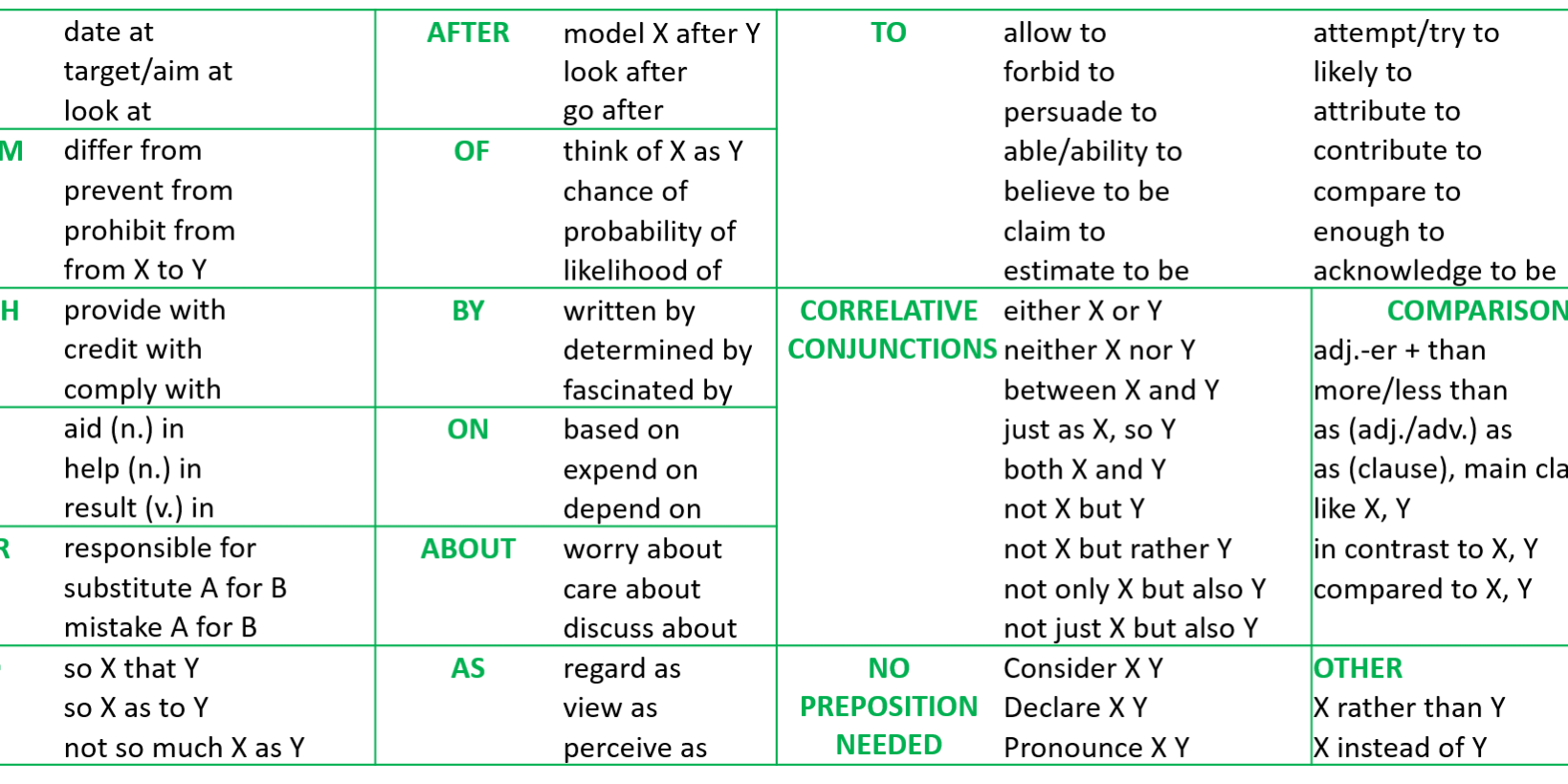Idioms are phrases that are considered correct according to standard English. Many idiomatic structures have passed from generation to generation without significant changes, so they don’t always follow the grammatical rules we’ve been discussing.
If you are a native English speaker, idioms are probably not much of an issue. Native speakers learn to recognize them instinctively by first hearing and then using them. For non-native speakers, though, learning them can be quite difficult. When you encounter an unfamiliar idiom in this chapter, write it down. When you’ve reached the end of the chapter, you’ll have a list of idioms to study and memorize.
Pay particularly close attention to prepositions (to, from, at, over, etc.) in the underlined portion of the sentences. Their usage is often dictated by idiomatic rules.
When it comes to attacking idioms, your ear is your most effective weapon. Consider the following example:
- A consumer may not THINK OF household cleaning products AS hazardous substances.
- A consumer may not THINK OF household cleaning products TO BE hazardous substances.
If one of the sentences doesn’t immediately jump out at you as the correct one, follow these two steps:
Compare the answers and find the differences between them. Usually, idiomatic expressions use very specific prepositions. In the choices above, the words that vary are AS and TO BE. What is the verb that’s paired with these prepositions? THINK. How does think behave when it is used idiomatically? If the answer isn’t immediately apparent, move on to the next step.
Your mind is a very powerful tool; it has hundreds of stored idioms that you’ve heard or read before (and they are all stored in their correct form). To make this tool work for you, simplify the expression, removing everything but the clause’s bare necessities. If necessary, you can simplify it even further, like this:
(A) I THINK of X AS Y.
(B) I THINK of X TO BE Y.
If you’ve heard or used the idiom before, the correct version will sound better to your ear. THINK OF X AS Y is the correct expression. You might have to repeat it to yourself a few times before the correct idiom starts to sound right. The version your ear prefers will almost always be the right one.
If the two steps above aren’t working, you might be looking at the wrong split. Look for another split and repeat the steps. It might also be your first time encountering the idiom. If all the options sound equally right to your ear, make an educated guess.
Now, we dare you to answer the following question in 60 seconds or less:
Paleontologists believe that fragments of a primate jawbone unearthed in Burma and estimated at 40 to 44 million years old provide evidence of a crucial step along the evolutionary path that led to human beings.
A. at 40 to 44 million years old provide evidence of
B. as being 40 to 44 million years old provides evidence of
C. that it is 40 to 44 million years old provides evidence of what was
D. to be 40 to 44 million years old provide evidence of
E. as 40 to 44 million years old provides evidence of what was
Explanation
The verb estimated should be followed by the infinitive to be, not the preposition at— unless the intention is to indicate a location at which someone made the estimate. The jawbone fragments were estimated to be a certain age. In addition, the plural subject fragments requires the plural verb provide.
- Estimated is incorrectly followed by at.
- Estimated should be followed by to be, not as being; the singular verb provides incorrectly follows the plural subject fragments.
- Introducing the clause that it is to the sentence makes it ungrammatical; the singular verb provides does not agree with the plural subject fragments.
- In this sentence, the verb estimated is correctly followed by the infinitive to be.
- The singular verb provides does not match the plural subject fragments.
For a complete list of Idioms, click here: GMAT Idioms List. For now, memorize the following structures:






